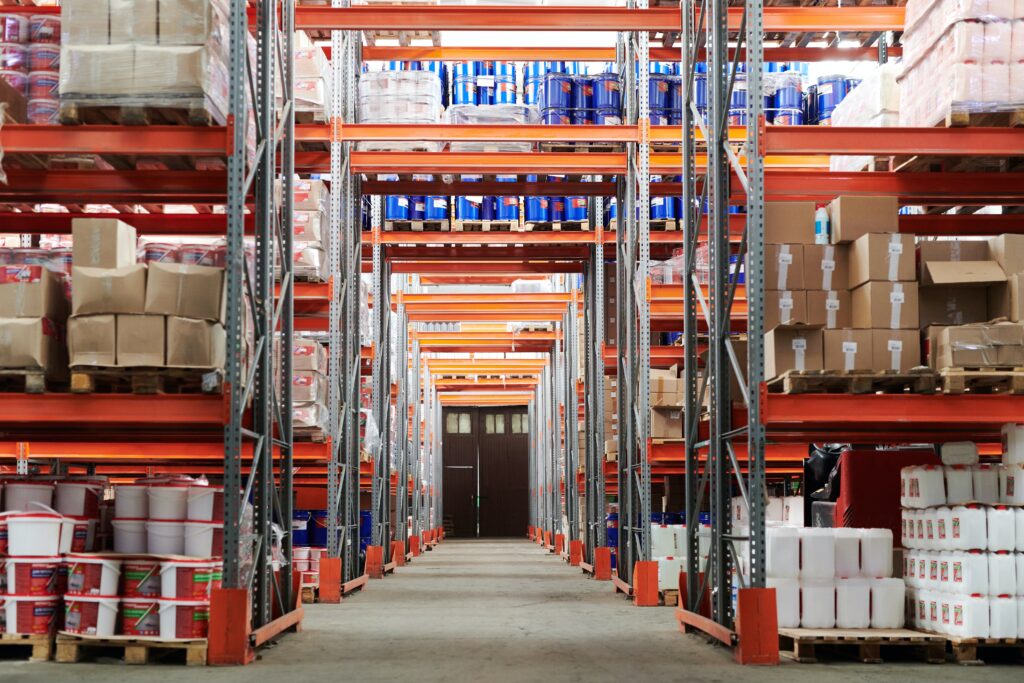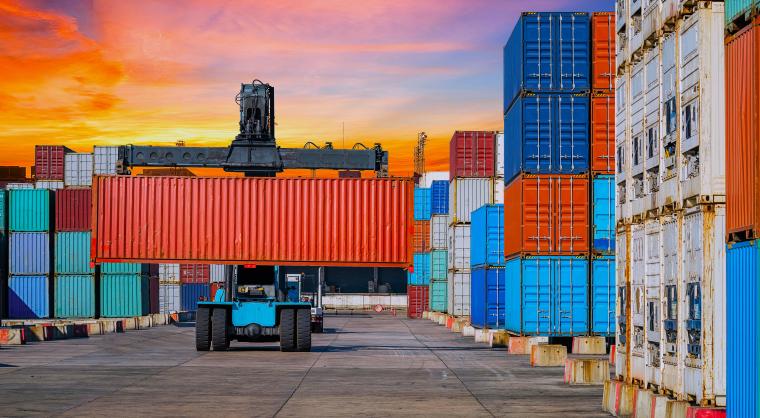Optimizing Supply Chains by means of Advanced Warehouse Terminals
In the current fast-paced world of logistics Efficiency, precision, and connectivity are key elements to the success of any company. Warehouses have grown from simple storage facilities into complex operational hubs requiring constant coordination in real-time and the flow of information. At the heart of this transformation lies the modern warehouse terminal, which is known as terminali magazzino in Italian in the form of terminali magazzino. The rugged, mobile or mounted equipments are vital for coordinating inventory, tracking items, and providing seamless interaction between workers as well as warehouse management technology. With the rise of automation and digitalization, warehouse terminals have become vital to achieving operational top-quality and keeping a competitive edge.  Warehouse terminals have been specifically developed to withstand harsh industrial environments, where conventional consumer electronics would swiftly stop working. They're engineered to resist impacts, dust, humidity, and extreme temperatures, ensuring uninterrupted performance even in challenging conditions. Many models have touchscreens, ergonomic grips and extended battery life that makes them ideal for extended shifts as well as continuous use. Their robust construction means fewer failures, lower maintenance costs, and consistent reliability qualities vital for businesses that operate all day long. Its durability makes terminali Magazzino an investment that will last for the long term of companies seeking to improve both resilience and efficiency in their supply chains. The primary function of these devices is to provide seamless data capture and communication between management and warehouse employees system. Warehouse terminals are used by workers for scanning barcodes, tracking inventory, managing orders, and keeping track of goods that are incoming and outgoing. Every scan updates the database immediately, eliminating the need for manual data entry and drastically reducing the chance of errors. The real-time transmission of data guarantees that inventory levels are always accurate which will allow for more efficient planning and faster decision-making. It allows supervisors to remotely monitor their activities analyse performance, monitor and adjust operations based on actual-time data. Warehouse terminals can make the whole logistical process easier to understand and controlled. One of the biggest advantages of warehouse terminals lies in their capability to connect instantly with warehouse management systems and ERP platforms. The integration makes sure that each move of a product, whether inbound either stored or outbound is immediately reflected within the digital system of the business. Managers can track the performance of their workflow, identify issues, and take informed decisions without delays. Real-time data exchange also enhances the accountability of employees, since every scanned item is automatically logged and tracked throughout its travels. This connectivity not only streamlines internal operations but also enhances general business intelligence and forecasting accuracy. The flexibility is another characteristic of Warehouse Terminals. They are offered in different configurations to suit diverse operational needs. They are great for hand-held devices to perform taking inventory and picking, as well as computer systems mounted on vehicles are created specifically for use in forklifts operating in big warehouses. Many models also come with wearable technology that allows workers to use their hands around freely, while maintaining full connectivity. In addition, features like touchscreen interfaces with voice control and finger-friendly picking make tasks more intuitive and reduce the time spent training new employees. The flexibility of this technology allows companies that range from small warehouses to global distribution centers to customize their logistics strategies to meet specific workflow needs. Dependability and durability are two of the most important characteristics of industrial warehouse terminals. They are built to function constantly in harsh conditions, where standard tablets or smartphones could fail. Whether exposed to humidity as well as cold storage dust from warehouses, these gadgets keep their performance constant. Their long-lasting batteries ensure continuous operation throughout shifts, while their reinforced housings protect internal components from damage or falls. Since downtime in logistics can translate directly to lost profits, investing in high-quality warehouse terminals will ensure that the processes run efficiently, day after day, without costly interruptions. To get supplementary information please visit https://www.idsolutions.it/terminali-magazzino/
Warehouse terminals have been specifically developed to withstand harsh industrial environments, where conventional consumer electronics would swiftly stop working. They're engineered to resist impacts, dust, humidity, and extreme temperatures, ensuring uninterrupted performance even in challenging conditions. Many models have touchscreens, ergonomic grips and extended battery life that makes them ideal for extended shifts as well as continuous use. Their robust construction means fewer failures, lower maintenance costs, and consistent reliability qualities vital for businesses that operate all day long. Its durability makes terminali Magazzino an investment that will last for the long term of companies seeking to improve both resilience and efficiency in their supply chains. The primary function of these devices is to provide seamless data capture and communication between management and warehouse employees system. Warehouse terminals are used by workers for scanning barcodes, tracking inventory, managing orders, and keeping track of goods that are incoming and outgoing. Every scan updates the database immediately, eliminating the need for manual data entry and drastically reducing the chance of errors. The real-time transmission of data guarantees that inventory levels are always accurate which will allow for more efficient planning and faster decision-making. It allows supervisors to remotely monitor their activities analyse performance, monitor and adjust operations based on actual-time data. Warehouse terminals can make the whole logistical process easier to understand and controlled. One of the biggest advantages of warehouse terminals lies in their capability to connect instantly with warehouse management systems and ERP platforms. The integration makes sure that each move of a product, whether inbound either stored or outbound is immediately reflected within the digital system of the business. Managers can track the performance of their workflow, identify issues, and take informed decisions without delays. Real-time data exchange also enhances the accountability of employees, since every scanned item is automatically logged and tracked throughout its travels. This connectivity not only streamlines internal operations but also enhances general business intelligence and forecasting accuracy. The flexibility is another characteristic of Warehouse Terminals. They are offered in different configurations to suit diverse operational needs. They are great for hand-held devices to perform taking inventory and picking, as well as computer systems mounted on vehicles are created specifically for use in forklifts operating in big warehouses. Many models also come with wearable technology that allows workers to use their hands around freely, while maintaining full connectivity. In addition, features like touchscreen interfaces with voice control and finger-friendly picking make tasks more intuitive and reduce the time spent training new employees. The flexibility of this technology allows companies that range from small warehouses to global distribution centers to customize their logistics strategies to meet specific workflow needs. Dependability and durability are two of the most important characteristics of industrial warehouse terminals. They are built to function constantly in harsh conditions, where standard tablets or smartphones could fail. Whether exposed to humidity as well as cold storage dust from warehouses, these gadgets keep their performance constant. Their long-lasting batteries ensure continuous operation throughout shifts, while their reinforced housings protect internal components from damage or falls. Since downtime in logistics can translate directly to lost profits, investing in high-quality warehouse terminals will ensure that the processes run efficiently, day after day, without costly interruptions. To get supplementary information please visit https://www.idsolutions.it/terminali-magazzino/  Durability, reliability, and continuous innovation are what make warehouse terminals a reliable investment for logistics companies. They are built with robust structures that can withstand the effects of water, impact, and dust, they're built to perform under the toughest conditions. Options like replaceable batteries, hot swapping capabilities and data encryption that is secure enhance their security and ease of use. The industry is now using artificial intelligence-driven analytics in predictive maintenance, as well as cloud-based synchronization in order to make devices even smarter. In the age of environmental sustainability, which is an important issue, more energy efficient terminals made of recyclable materials are also emerging. This combination of toughness and technological sophistication ensures that warehouse terminals remain top of the line in modern logistics solutions. The terminals for warehouses that are magazzino form the core of modern logistic operations. The integration of RFID scans for barcodes, wireless communications, as well as their rugged construction allows warehouses to function at peak efficiency with minimal errors. With real-time monitoring as well as accurate information flow between warehouse floors as well as management software, these systems empower enterprises to make quicker, smarter decisions. Since supply chains get more complicated, the demand for reliable and smart warehouse terminals will only increase. Businesses that invest in these technologies today are poised to take the lead in the logistics of tomorrow that is where speed, precision, and connectivity define the success.
Durability, reliability, and continuous innovation are what make warehouse terminals a reliable investment for logistics companies. They are built with robust structures that can withstand the effects of water, impact, and dust, they're built to perform under the toughest conditions. Options like replaceable batteries, hot swapping capabilities and data encryption that is secure enhance their security and ease of use. The industry is now using artificial intelligence-driven analytics in predictive maintenance, as well as cloud-based synchronization in order to make devices even smarter. In the age of environmental sustainability, which is an important issue, more energy efficient terminals made of recyclable materials are also emerging. This combination of toughness and technological sophistication ensures that warehouse terminals remain top of the line in modern logistics solutions. The terminals for warehouses that are magazzino form the core of modern logistic operations. The integration of RFID scans for barcodes, wireless communications, as well as their rugged construction allows warehouses to function at peak efficiency with minimal errors. With real-time monitoring as well as accurate information flow between warehouse floors as well as management software, these systems empower enterprises to make quicker, smarter decisions. Since supply chains get more complicated, the demand for reliable and smart warehouse terminals will only increase. Businesses that invest in these technologies today are poised to take the lead in the logistics of tomorrow that is where speed, precision, and connectivity define the success.